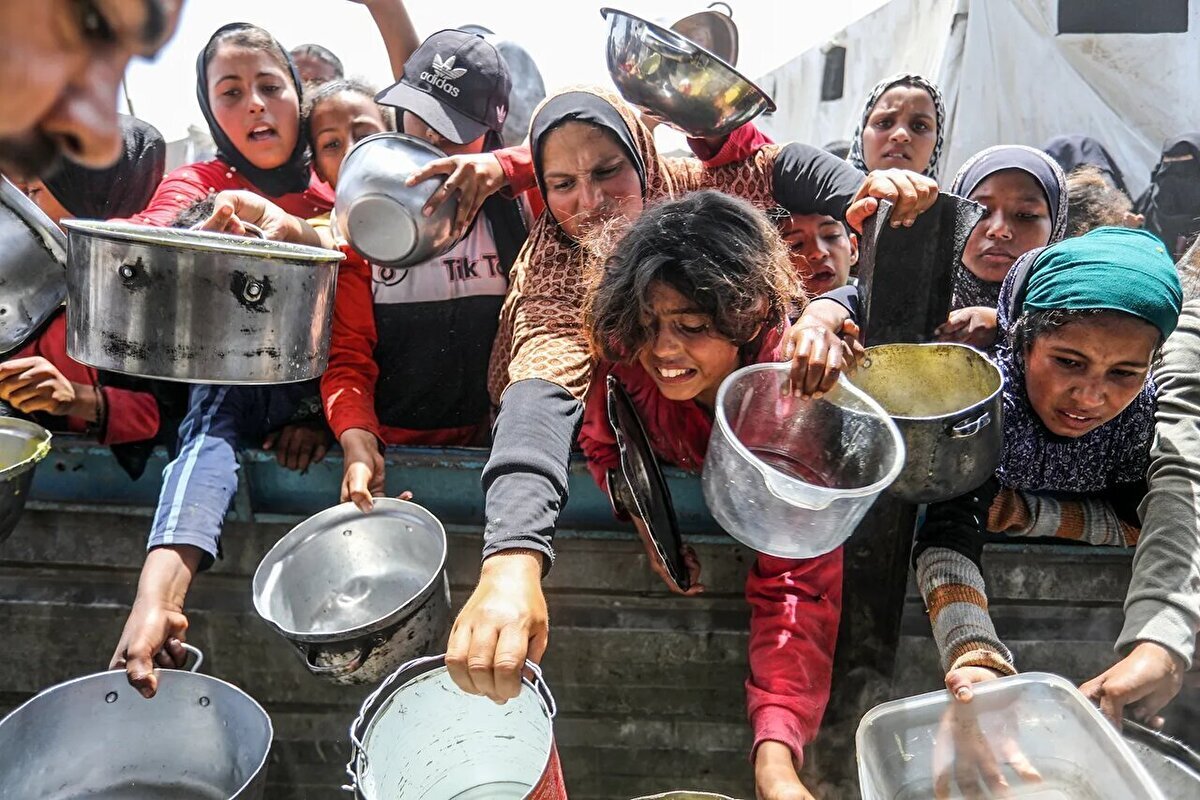Gaza Is in the Fifth Stage of Famine
TEHRAN (Defapress) - The Gaza Strip, a region with a population of approximately 2.3 million, has faced an unprecedented humanitarian crisis in recent years due to a prolonged blockade, military operations, and severe restrictions on the entry of humanitarian aid. This crisis has been escalating by the minute, growing in scale and severity, and is on the verge of becoming a global humanitarian catastrophe.

However, the deeply regrettable and distressing issue is that the Zionist regime has used "starvation" and "famine" as tools against the people of Gaza and the Hamas movement during the Gaza war. These factors have turned the Gaza war crisis, particularly since October 2023 and the escalation of hostilities, into a full-blown disaster. According to credible sources, the current state of hunger and famine in Gaza has become so severe and critical that global public opinion has been deeply saddened and outraged by the situation.
Accordingly, if we are to examine the current state of hunger and famine in the Gaza Strip, we must note that, based on reports from the United Nations and humanitarian organizations, Gaza is experiencing a critical phase of food insecurity, with some areas reaching Phase 5 famine (catastrophic).
Regarding the "spread of famine across Gaza," we must highlight that, according to the Food and Agriculture Organization (FAO), over 133,000 people (about 6% of Gaza's population) are currently in Phase 5 food insecurity (catastrophic famine), and this number is projected to rise to 345,000 by April 2026.
On the other hand, the Integrated Food Security Phase Classification (IPC) report indicates that 93% of Gaza’s population (around 1.95 million people) is facing acute food insecurity, with 244,000 living in catastrophic conditions. This demonstrates that nearly all of Gaza’s population is grappling with hunger and food insecurity at varying levels, and the situation is worsening daily.
Another critical factor exacerbating hunger and famine in Gaza is the sharp increase in food prices in the Strip. Reports indicate that the price of flour in Gaza has increased by up to 3,000 times compared to pre-October 2023 levels. For example, a bag of flour now costs 150 shekels (around $42), a kilogram of sugar has reached $1,000, and meat and fruits have become scarce.
The worsening hunger and famine in Gaza have had a devastating impact on vulnerable groups, particularly children and pregnant women. UNICEF has reported that 71,000 children under five and 17,000 pregnant women urgently require treatment for malnutrition. Additionally, there have been reports of increased miscarriages, underweight births, and birth defects due to hunger and the lack of medical services.
The rising death toll from hunger and famine in Gaza is another critical issue that has drawn global attention. The Palestinian Health Ministry reported that, as of July 2025, at least 127 people, including 85 children, have died from starvation and malnutrition.
However, this is not the full extent of reports on the latest state of hunger and famine in Gaza. Other reports indicate an increase in deaths due to malnutrition, particularly among children and patients. Hospitals have reported that children with severe malnutrition symptoms, such as emaciated bodies and swollen bellies, are arriving at medical centers.
Yet, it is no secret that the "blockade and restrictions on humanitarian aid" are the primary causes of severe hunger and large-scale famine in Gaza. Since October 2023, the Zionist regime has imposed strict limitations on the entry of food, water, medicine, and other essential supplies. The United Nations Relief and Works Agency for Palestine Refugees (UNRWA) has also stated that no food aid has entered Gaza for over four months, and warehouses full of food in neighboring countries, such as El Arish in Egypt, are waiting for permission to enter the Strip.
Finally, the widespread and unprecedented hunger and famine threatening the lives of all Palestinians in Gaza are not solely the actions of the illegitimate and occupying Zionist regime; they are also significantly sustained and expanded due to the support and backing of the United States and Western countries.
